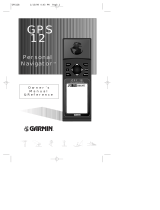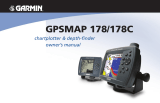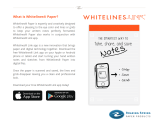
vii
GETTING STARTED
Table of Contents
Warning ..................................................................................................................i
Cautions.................................................................................................................ii
Capabilities/Warranty .........................................................................................iii-iv
Preface/Packing List .............................................................................................v-vi
Table of Contents/Keypad Usage.......................................................................vii-viii
Getting Started...................................................................................................1-18
Section 1: GPSMAP Status Page ....................................................................19-21
Satellite and receiver status, entering initial positions
Section 2: Position Page.................................................................................22-23
Position Page description and uses
Section 3: Sounder Page ................................................................................24-38
Sounder Page description, zooming, underwater waypoints, and options
Section 4: Map Page.......................................................................................39-48
Map Page description, modes, scales, and options
Section 5: Navigation Page ...........................................................................49-51
Navigation Page use and options
Section 6: Main Menu Page ................................................................................52
Viewing the main menu page and selecting submenus
Section 7: Waypoints ....................................................................................53-61
Creating, using, and editing waypoints
Section 8: GOTO/MOB/TracBack Features....................................................62-64
Going to a destination and using GOTO options/TracBack routes
Section 9: Routes ...........................................................................................65-76
Creating, editing, and using routes
Section 10: Setup Menus................................................................................77-83
System and navigation setup; timers, alarms and track log
Section 11: Using G-Chart cartridges ............................................................84-85
Inserting, removing, and using electronic chart cartridges
Section 12: LORAN TDs ................................................................................86-89
Using the LORAN position TD format
APPENDICES
Appendix A: . . . . . . . . . . . . . . . . . . . . . . . . .90-94
GPSMAP 235 Sounder Installation
Appendix B: . . . . . . . . . . . . . . . . . . . . . . . . .95-97
Wiring and Specifications
Appendix C: . . . . . . . . . . . . . . . . . . . . . . . . .98-99
Messages
Appendix D: . . . . . . . . . . . . . . . . . . . . . . .100-102
Map Datums
Appendix E: . . . . . . . . . . . . . . . . . . . . . . .103-104
Glossary
Appendix F: . . . . . . . . . . . . . . . . . . . . . . . . . . .105
Time Offset Chart
Appendix G: . . . . . . . . . . . . . . . . . . . . . . .106-108
Index
19000138.10A.QXD 11/11/99 8:46 AM Page vii
























